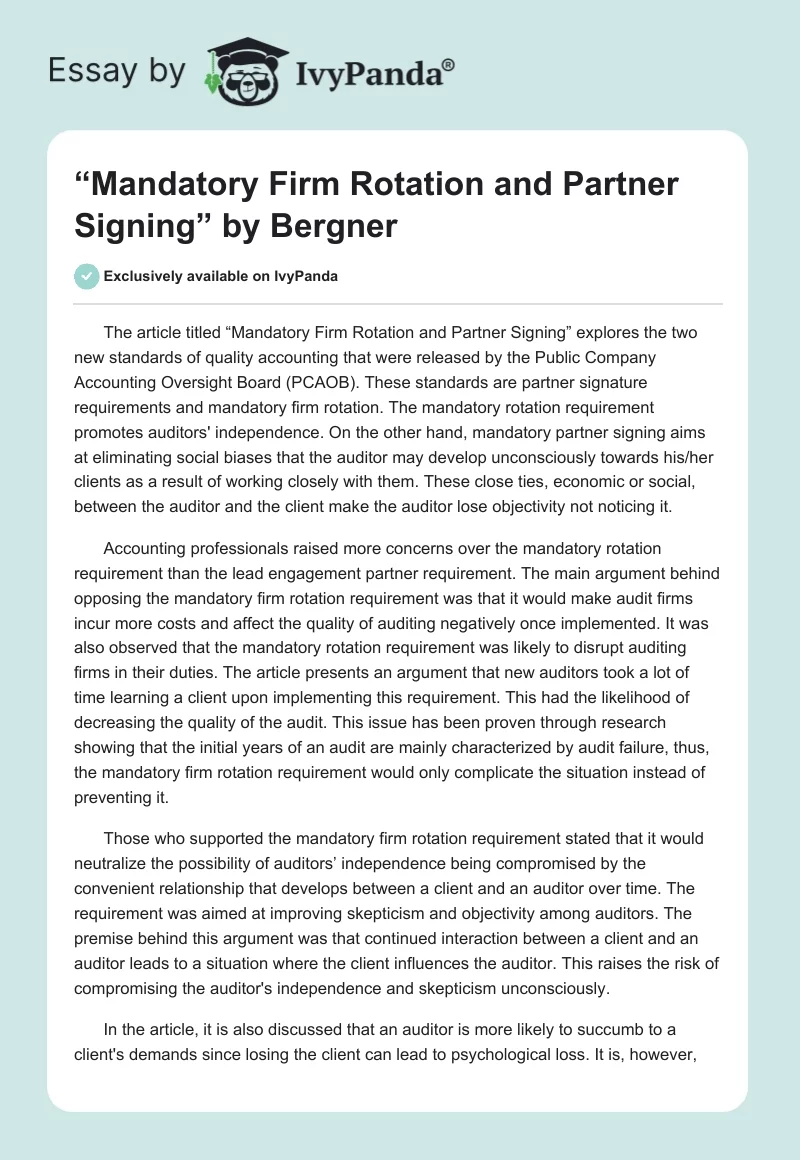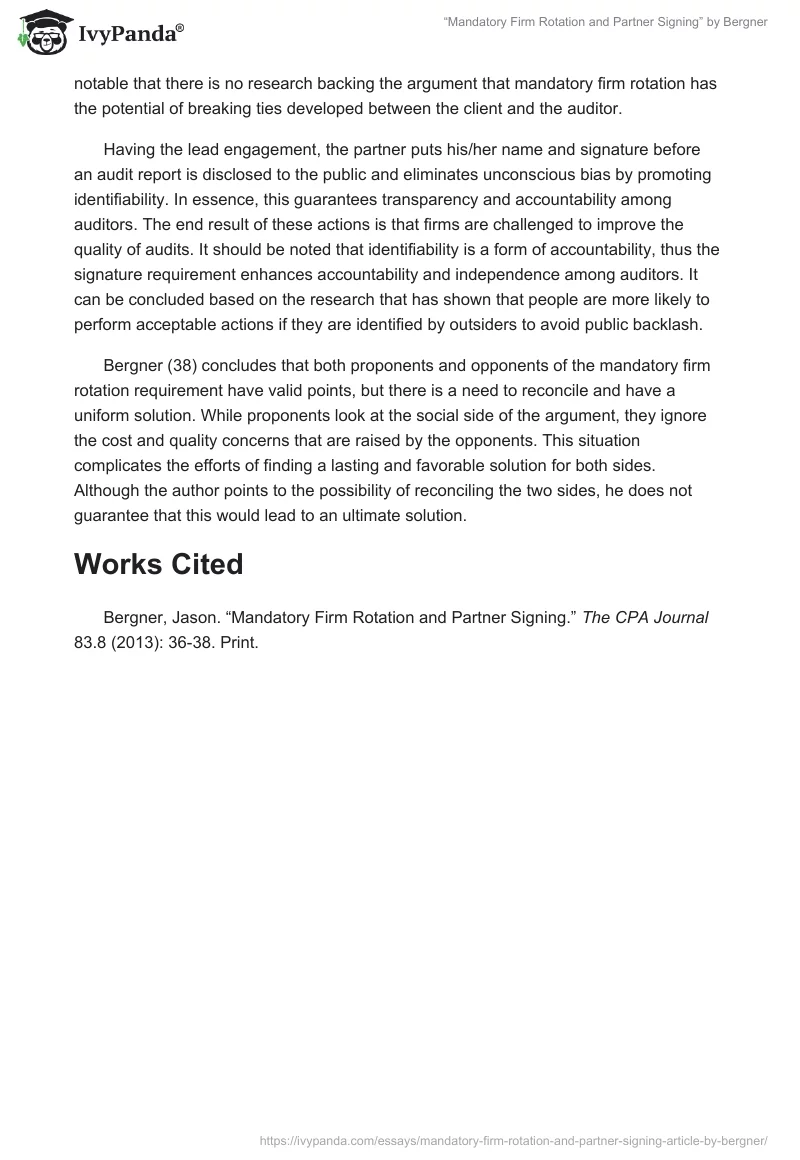The article titled “Mandatory Firm Rotation and Partner Signing” explores the two new standards of quality accounting that were released by the Public Company Accounting Oversight Board (PCAOB). These standards are partner signature requirements and mandatory firm rotation. The mandatory rotation requirement promotes auditors’ independence. On the other hand, mandatory partner signing aims at eliminating social biases that the auditor may develop unconsciously towards his/her clients as a result of working closely with them. These close ties, economic or social, between the auditor and the client make the auditor lose objectivity not noticing it.
Accounting professionals raised more concerns over the mandatory rotation requirement than the lead engagement partner requirement. The main argument behind opposing the mandatory firm rotation requirement was that it would make audit firms incur more costs and affect the quality of auditing negatively once implemented. It was also observed that the mandatory rotation requirement was likely to disrupt auditing firms in their duties. The article presents an argument that new auditors took a lot of time learning a client upon implementing this requirement. This had the likelihood of decreasing the quality of the audit. This issue has been proven through research showing that the initial years of an audit are mainly characterized by audit failure, thus, the mandatory firm rotation requirement would only complicate the situation instead of preventing it.
Those who supported the mandatory firm rotation requirement stated that it would neutralize the possibility of auditors’ independence being compromised by the convenient relationship that develops between a client and an auditor over time. The requirement was aimed at improving skepticism and objectivity among auditors. The premise behind this argument was that continued interaction between a client and an auditor leads to a situation where the client influences the auditor. This raises the risk of compromising the auditor’s independence and skepticism unconsciously.
In the article, it is also discussed that an auditor is more likely to succumb to a client’s demands since losing the client can lead to psychological loss. It is, however, notable that there is no research backing the argument that mandatory firm rotation has the potential of breaking ties developed between the client and the auditor.
Having the lead engagement, the partner puts his/her name and signature before an audit report is disclosed to the public and eliminates unconscious bias by promoting identifiability. In essence, this guarantees transparency and accountability among auditors. The end result of these actions is that firms are challenged to improve the quality of audits. It should be noted that identifiability is a form of accountability, thus the signature requirement enhances accountability and independence among auditors. It can be concluded based on the research that has shown that people are more likely to perform acceptable actions if they are identified by outsiders to avoid public backlash.
Bergner (38) concludes that both proponents and opponents of the mandatory firm rotation requirement have valid points, but there is a need to reconcile and have a uniform solution. While proponents look at the social side of the argument, they ignore the cost and quality concerns that are raised by the opponents. This situation complicates the efforts of finding a lasting and favorable solution for both sides. Although the author points to the possibility of reconciling the two sides, he does not guarantee that this would lead to an ultimate solution.
Works Cited
Bergner, Jason. “Mandatory Firm Rotation and Partner Signing.” The CPA Journal 83.8 (2013): 36-38. Print.


